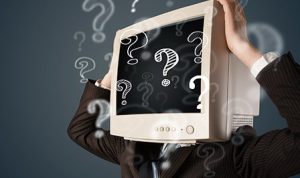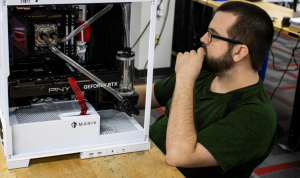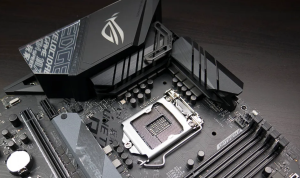Graphics Cards Explained What You Need to Know introduces a crucial part of modern computing that significantly impacts performance, especially for gamers and creative professionals. Understanding the functionality and types of graphics cards can help you make informed decisions when it comes to upgrades or purchases. From rendering complex graphics in video games to processing high-resolution video, graphics cards play a vital role in enhancing your overall digital experience.
This exploration delves into the basics of graphics cards, their components, and how they interact with other hardware in your system. Additionally, we’ll uncover the different categories of graphics cards available on the market, ranging from integrated solutions to powerful dedicated GPUs, ensuring you grasp what to consider for the best performance tailored to your needs.
In today’s fast-paced digital world, the need for effective communication has never been more crucial. Whether you’re connecting with friends, managing a team, or engaging with clients, the ability to convey your message clearly and professionally can make all the difference. This article explores the nuances of communication, touching on various aspects that influence our interactions, such as verbal and non-verbal cues, the role of technology, and the importance of emotional intelligence.To begin with, let’s discuss what effective communication actually entails.
At its core, effective communication is all about conveying information in a way that is understood by the recipient. It involves not only the words we choose but also how we deliver them. Tone of voice, body language, and even facial expressions can significantly impact how a message is received. For example, saying “I’m fine” in a cheerful tone may suggest contentment, while the same words uttered in a flat, monotone voice might imply the opposite.
This demonstrates the importance of non-verbal cues in everyday conversations.Next, we must consider the role of technology in communication. With the advent of social media, instant messaging, and video conferencing, the way we interact has transformed dramatically. While these tools offer convenience and speed, they also come with their own set of challenges. Misinterpretations can easily occur in written communication, where tone and context may be lost.
Therefore, it’s essential to be mindful of how we communicate digitally. Utilizing emojis or gifs can sometimes help convey feelings that words alone might not express. Additionally, ensuring clarity and conciseness can prevent misunderstandings in emails or texts.Another critical element to address is the importance of active listening. Communication is a two-way street, and being an effective communicator also involves being a good listener.
Active listening means fully engaging with the speaker, providing feedback, and asking clarifying questions. This not only shows respect for the speaker but also helps in building rapport and trust. In a professional setting, this can foster a collaborative environment where ideas can be shared openly, leading to innovative solutions and improved team dynamics.Moreover, emotional intelligence plays a vital role in communication.
Being aware of our own emotions and understanding those of others can significantly impact our interactions. For instance, if a colleague is visibly upset, demonstrating empathy and addressing their feelings can create a supportive atmosphere. This is particularly important in leadership roles, where the ability to connect with team members on an emotional level can enhance motivation and productivity. Leaders who communicate with empathy are often more successful in guiding their teams through challenges.Furthermore, cultural differences can also influence communication styles.

In a globalized world, we often find ourselves interacting with individuals from diverse backgrounds. Being culturally aware and sensitive to different communication styles is crucial. For instance, some cultures may prioritize direct communication, while others may prefer a more indirect approach. Understanding these differences can help avoid potential conflicts and foster more effective collaborations.In addition to these elements, it’s important to adapt our communication styles based on the context and audience.
For instance, the way we communicate in a formal business meeting will differ significantly from a casual conversation with friends. Tailoring our message to suit the audience not only enhances understanding but also increases engagement. Using jargon or technical terms may be appropriate among industry peers, but simplifying language for a broader audience is essential for effective communication.Moreover, the ability to provide constructive feedback is an integral part of effective communication.
Whether in a personal or professional setting, giving feedback in a way that is respectful and helpful can foster growth and improvement. It’s essential to focus on specific behaviors rather than personal attributes and to balance criticism with positive reinforcement. This approach not only encourages open dialogue but also builds a culture of trust and continuous learning.As we navigate through various communication scenarios, it’s also important to be aware of our own biases.
Everyone has preconceived notions that can color our perceptions and interactions. Being mindful of these biases allows us to approach conversations with an open mind and a genuine willingness to understand others’ perspectives. This is especially important in situations where disagreements may arise. Engaging with respect and a willingness to find common ground can lead to more productive discussions and resolutions.In conclusion, effective communication is a multifaceted skill that encompasses various elements, from verbal and non-verbal cues to emotional intelligence and cultural sensitivity.
By enhancing our communication skills, we can improve our relationships, whether in personal or professional contexts. It requires practice, patience, and a commitment to understanding both ourselves and others. As we continue to evolve in this increasingly interconnected world, mastering the art of communication will undoubtedly serve us well in our endeavors, paving the way for richer interactions and greater collaboration.Ultimately, the key takeaway is that communication is not just about exchanging information; it’s about building connections.
Whether you’re sharing ideas, providing feedback, or simply catching up with a friend, being mindful of how you communicate can lead to more meaningful exchanges. So, let’s strive to be effective communicators, fostering an environment where everyone feels heard, understood, and valued. By doing so, we can create a more inclusive and collaborative community, both in our personal lives and our workplaces.





